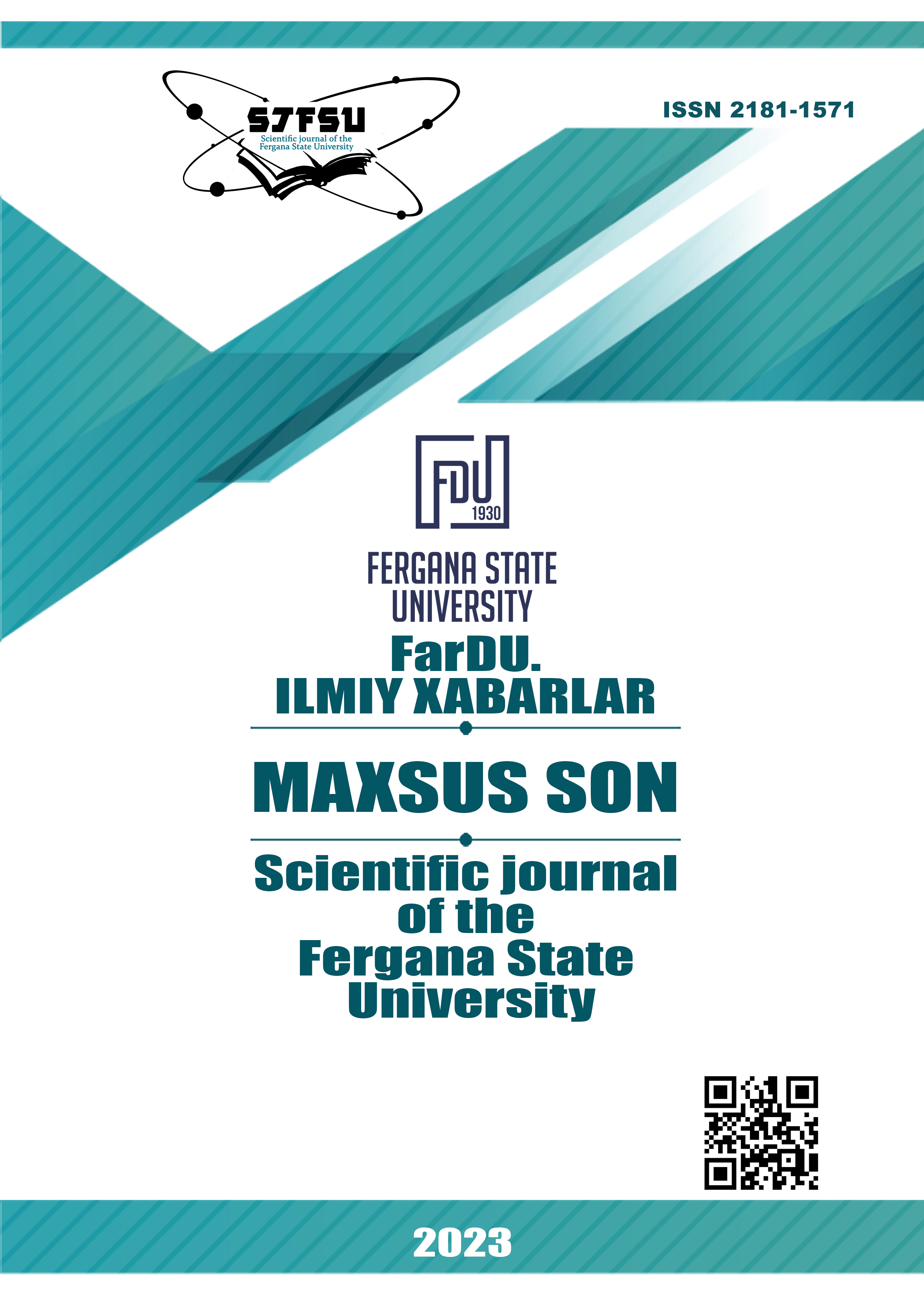ON THE ISSUE OF TRANSFER AND INTERFERENCE IN LEARNING GERMAN AFTER ENGLISH
Keywords:
interference, transfer, second foreign language, German, language system, language structure.Abstract
This article examines the problem of the positive and negative impact of the native language and the first foreign language on the study of a second foreign language. Very often, when learning a new language, the student has some difficulties due to the already existing knowledge of previously studied languages, which create a linguistic barrier to mastering another language. Errors related to language interference are the most common among Uzbek students studying German as a second foreign language. This study analyzes phonetic, lexico-semantic and grammatical interference errors. The linguistic research conducted is mainly devoted to interference errors in the native language or interference errors in the first foreign language. In addition, the analysis of interference errors at the phonetic, lexico-semantic and grammatical levels is practically absent in the relevant works. This work is devoted to interference errors both in the native language and in the first and second foreign languages, as well as interference errors at the above-mentioned language levels. Otherwise, specific suggestions for error assessment and elimination are made based on the definition, as well as the manifestation of language interference. In this context, it is assumed that this work opens up new perspectives in the field of error analysis and correction.
References
Alpentauer E. Gesteuerter Zweitspracherwerb. Voraussetzungen und Konsequenzen für den Unterricht. (Hrsg.) München: Hueber.1987.
Askarova Sh.I. Особенности билингвизма в условиях языковых контактов. Eurasian Journal of Academic Research № 2 часть 4, 2023. –с. 190-194. (Askarova Sh.I. Features of bilingualism in terms of language contacts. Eurasian Journal of Academic Research № 2, 2023. –р. 190-194.
Askarova Sh.I. Явление лексико-семантической интерференции при изучении немецкого языка студентами-узбеками. Eurasian Journal of Academic Research, 3(2 Part 4), -С. 185–189. (Askarova Sh.I. The phenomenon of lexical and semantic interference in the study of the German language by Uzbek students. Eurasian Journal of Academic Research, 3(2 Part 4), -р. 185–189.
Bausch Karl-Richard & Raabe Horst. Zur Frage der Relevanz von kontrastiver Analyse, Fehleranalyse und Interimsprachenanalyse für den Fremdsprachenunterricht. Jahrbuch Deutsch als Fremdsprache Bd. 4, -S. 56-75.15.
Bondzio W. Einführung in die Grundfragen der Sprachwissenschaft, VEB Bibliographisches Institut, Leipzig
Chomsky N. Aspekte der Syntaxtheorie. Frankfurt. 1972.
Czochralski, Jan (1971), Zur sprachlichen Interferenz. In: Linguistics 67/1971, S. 5–25
http://tapemark.narod.ru/les/211b.html
Juhasz J. Probleme der Interferenz, Max Hueber Verlag, München.30
Lado R. Meine Perspektive der kontrastiven Linguistik 1945–1972. In: Nickel, Gerhard (Hrsg.) (1972), Reader zur kontrastiven Linguistik, Athenäum Fischer Taschenbuch Verlag, Frankfurt a.M.
Odstrchilova M. Lexikalische Interferenz im studienbegleitenden Fremdsprachenunterricht. – www2.rz.hu-berlin.de/linguistik/institut/syntax/krakau2006/beitraege/odstrcilova.pdf
Uhlisch, G. Immer wieder: Interferenz(fehler) im Fremdsprachenunterricht. – In: Fremde Sprache Deutsch – Tübingen: Narr, 1995. – S. 225–238.230.
Джусупов М. Фоностилистика и звуковая интерференция как истоки вариативности функционально-стилевого маркера языковой единицы и речи / М. Джусупов, К. Сапарова // Новая Россия: традиции и инновации в языке и науке о языке : материалы докладов и сообщений Международной научной конференции, посвященной юбилею Заслуженного деятеля науки РФ, доктора филологических наук, профессора Л. Г. Бабенко, 28—30 сент. 2016 г., Екатеринбург, Россия. — Москва; Екатеринбург : Кабинетный ученый, 2016. — С. 69-84.с. 78.( Dzhusupov M Phonostylistics and sound interference as the origins of the variability of the functional and stylistic marker of a linguistic unit and speech. M. Dzhusupov, K. Saparova // New Russia: traditions and innovations in language and the science of language : materials of reports and reports of the International Scientific Conference dedicated to the anniversary of the Honored Scientist of the Russian Federation, Doctor of Philology, Professor L. G. Babenko, September 28-30, 2016, Yekaterinburg, Russia. — Moscow; Yekaterinburg : Cabinet Scientist, 2016. — p. 69-84.p. 78.
Ярцева В.Н.. М.: Сов. Энциклопедия. 1990. — С. 685. (Yartseva V.N. M.: Sov. Encyclopedia. 1990. — p. 685)
Шелестова О. В. Способы предупреждения и преодоления интерференции при изучении неродственных языков (на примере английского и арабского языков) // Казанский педагогический журнал. 2008. № 5. -С. 14–20. (15. Shelestova O. V. Ways to prevent and overcome interference in the study of unrelated languages (by the example of English and Arabic) // Kazan Pedagogical Journal. 2008. No. 5. - pp. 14-20.)
Downloads
Published
Issue
Section
License
Copyright (c) 2024 Scientific journal of the Fergana State University

This work is licensed under a Creative Commons Attribution-NonCommercial-NoDerivatives 4.0 International License.
Most read articles by the same author(s)
- Шахноза Аскарова , ON THE PROBLEM OF LANGUAGE INTERFERENCE AND BILINGUALISM IN THE STUDY OF A TERTIARY LANGUAGE , Scientific journal of the Fergana State University: No. 6- TOM (2023): SPECIAL ISSUE

